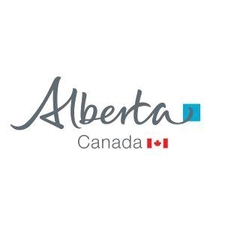-ANTHROPOGENIC
Type of resources
Topics
Keywords
Contact for the resource
Provided by
Formats
Representation types
Update frequencies
status
-

This is a dataset of forest harvest areas for the Upper North Saskatchewan and Upper Red Deer River Basins of Alberta. This dataset was created to support spatial analyses of forest harvest areas in the Upper North Saskatchewan and Upper Red Deer River Basins for the Alberta Environment and Parks report entitled “Ecological response to land use and human activities in the eastern slopes of Alberta's Rocky Mountains: A scientific assessment”. This is a polygon dataset covering the Upper North Saskatchewan and upper Red Deer River Basins of Alberta, Canada for the period 1961-2016. This dataset of forest harvest areas was created using three data sources obtained from Alberta Agriculture and Forestry: The AVI (Alberta Agriculture and Forestry, 2017a), the Post Inventory Final Cutblocks layer (Alberta Agriculture and Forestry, 2017b), and Regional Forestry Cultblock data (obtained directly from Alberta Agriculture and Forestry, March 2018). For further details, see report entitled “Land use, climate change and ecological responses in the Upper North Saskatchewan and Upper Red Deer River Basins: A scientific assessment”, available at: https://open.alberta.ca/publications/9781460140697. Please note: this legacy dataset will not be updated. For questions regarding the data, please contact AEP.Data@gov.ab.ca.
-

This is a linear disturbance dataset for the Upper North Saskatchewan and Upper Red Deer River Basins of Alberta. This dataset was created to support spatial analyses of linear disturbances in the Upper North Saskatchewan and Upper Red Deer River Basins for the Alberta Environment and Parks report entitled “Ecological response to land use and human activities in the eastern slopes of Alberta's Rocky Mountains: A scientific assessment”. This is a polyline dataset covering the Upper North Saskatchewan and Upper Red Deer River Basins of Alberta, Canada. It shows linear features present in ~2016/2017. Linear disturbances are grouped into five categories using attribution from input data sources. These include: paved roads. gravel roads. unimproved roads, unclassified roads, and truck trails. pipelines and powerlines. and cutlines and trails.The dataset compiles information from five of the most current Government of Alberta and public linear disturbance data sources: these are: Alberta Base Features (AB BF) (Alberta Environment and Parks, 2018), 2017 Red Deer – North Saskatchewan Trail data (RDNS Regional Informatics Unit, Alberta Environment and Parks, November 2017), 2017 Pipeline data (Ecosystem Services and Science Section, Alberta Environment and Parks March 2018), Jasper National Park Official Trails, and Banff National Park Official Trails (obtained from geomatics coordinators for each National Park, July 2018 and available through the Government of Canada Open data license agreement). Please note: this legacy dataset will not be updated. For questions regarding the data, please contact AEP.Data@gov.ab.ca.
 Arctic SDI catalogue
Arctic SDI catalogue